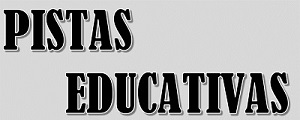ANÁLISIS DEL PROCESO DE FABRICACIÓN POR INYECCIÓN DE PLÁSTICOS PARA LA PRODUCCIÓN DE UN BUJE UTILIZANDO MOLDFLOW (ANALYSIS OF THE OF THE MANUFACTURING PROCESS BY PLASTIC INJECTION FOR THE PRODUCTION OF A BUSHING USING MOLDFLOW)
Resumen
El artículo presenta un estudio sobre la simulación de un buje utilizando el software Moldflow como herramienta de análisis para comprender mejor su comportamiento bajo diferentes condiciones de funcionamiento. Se realizó una investigación detallada de diversos parámetros relacionados con la geometría, material y proceso de fabricación del buje, con el objetivo de optimizar a futuro el diseño y mejorar su rendimiento. Los resultados obtenidos proporcionaron información valiosa para la toma de decisiones en el proceso de diseño y fabricación de componentes similares en el futuro. En general, se observan mejoras significativas en la resistencia y durabilidad del buje al perfeccionar su diseño y material. Además, se identificaron posibles áreas de mejora en el proceso de fabricación que podrían aumentar la eficiencia y reducir los costos. Además, los resultados obtenidos proporcionaron información valiosa para mejorar el diseño y rendimiento de bujes y componentes similares en la ingeniería aplicada.
Palabras Clave: Diseño mecánico, Herramienta digital, Moldflow, Simulación.
Abstract
The paper presents a study on the simulation of a bushing using Moldflow software as a simulation tool to better understand its behavior under different operating conditions. A detailed investigation of various parameters related to the geometry, material and manufacturing process of the bushing was carried out, with the objective of optimizing the future design and improving its performance. The results obtained provided valuable information for decision making in the design and manufacturing process of similar components in the future. In general, significant improvements in the strength and durability of the bushing were observed by refining its design and material. In addition, potential areas of improvement in the manufacturing process were identified that could increase efficiency and reduce costs. In addition, the results obtained provided valuable information for improving the design and performance of bushings and similar components in applied engineering.
Keywords: Digital tooling, Mechanical design, Moldflow, Simulation.
Texto completo:
605-620 PDFReferencias
Arès, F.; Delbergue, D.; Demers, V. Injection Flow Rate Threshold Prevent-ing Atypical In-Cavity Pressure during Low-Pressure Powder Injection Mold-ing. Powders, 2, 709–726. 2023.
Autodesk Inc. Mold Flow Simulation vs. SolidWorks Plastics: A Feature Comparison. Autodesk Technical White Paper. 2021.
Choi, J., & Park, S. Evaluating the Performance of Plastic Injection Simula-tion Tools. Polymer Engineering & Science, 58(7), 1093-1101. 2018.
Ding, Y.; Hassan, M.H.; Bakker, O.; Hinduja, S.; Bártolo, P. A Review on Mi-crocellular Injection Moulding. Materials, 14, 4209. 2021.
Goutham, P. K., Ramesha, N. Moldflow analysis for optimization of gate loca-tion in an injection moulding tool for an electric meter box. International Journal of Creative Research Thoughts (IJCRT). Vol. 10, no. 7, pp. e722-e727. 2022.
Huang, X., Zhang, W., & Wang, Y. Inverse Reconstruction of Rearview Mirror Shell and Mold Flow Analysis. Journal of Physics: Conference Series, 2562(1), 012048. 2023.
Knoll, J.; Heim, H. P. Analysis of the Similarity between Injection Molding Simulation and Experiment. Polymers, 16, 1265, 2024.
Li, J.; Ong, Y.C.; Wan Muhamad, W.M. Optimization Design of Injection Mold Conformal Cooling Channel for Improving Cooling Rate. Processes, 12, 1232. 2024.
Liparoti, S.; De Piano, G.; Salomone, R.; Pantani, R. Analysis of Weld Lines in Micro-Injection Molding. Materials, 16, 6053. 2023.
Mehta, E, Padhi, S. Performance analysis of plastic injection molding using particle swarm based modified sequential quadratic programming algorithm multi objective optimization model. Journal of Theoretical and Applied Infor-mation Technology. Vol. 101, no. 3, pp. 1053-1066. 2023.
Oikonomou, D.; Heim, H. P. Analysis and Validation of Varied Simulation Pa-rameters in the Context of Thermoplastic Foams and Special Injection Mold-ing Processes. Polymers, 15(9), 2119, 2023.
Shashank, S., Sudeep, I., Nagaraja, R. Design and plastic flow analysis of a 16-cavity injection mold for a 2-pole automobile wiring harness connector. In-ternational Journal of Engineering Technology and Management Sciences, Vol. 5, no. 7, pp. 260-268. 2023.
Shen, Z., et al. Comparative Analysis of Injection Molding Simulation Tools: Mold Flow, Autodesk Simulation, and SolidWorks Plastics. Journal of Manu-facturing Processes, 25, 122-131. 2017.
Wang, Y.; Lee, C. Design and Optimization of Conformal Cooling Channels for Increasing Cooling Efficiency in Injection Molding. Appl. Sci., 13, 7437. 2023.
URL de la licencia: https://creativecommons.org/licenses/by/3.0/deed.es

 Pistas Educativas está bajo la Licencia Creative Commons Atribución 3.0 No portada.
Pistas Educativas está bajo la Licencia Creative Commons Atribución 3.0 No portada. 
TECNOLÓGICO NACIONAL DE MÉXICO / INSTITUTO TECNOLÓGICO DE CELAYA
Antonio García Cubas Pte #600 esq. Av. Tecnológico, Celaya, Gto. México
Tel. 461 61 17575 Ext 5450 y 5146
pistaseducativas@itcelaya.edu.mx
